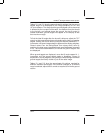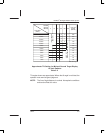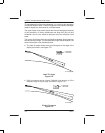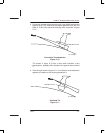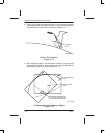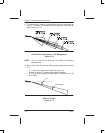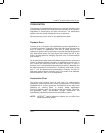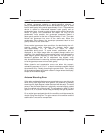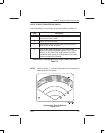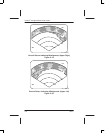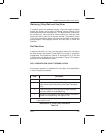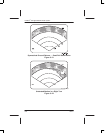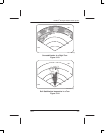
PRIMUS
R
660 Digital Weather Radar System
A28–1146–111
REV 2 5-15
Radar Facts
STABILIZATION
The purpose of the stabilization system is to hold the elevation of the
antenna beam relative to the earth’s surface constant at all azimuths,
regardless of aircraft bank and pitch maneuvers. The stabilization
system uses the aircraft attitude source as a reference.
Several sources of error exist in any stabilization system.
Dynamic Error
Dynamic error is the basis of the stabilization system. Stabilization is
a corrective process. It logically follows that there must first be some
error to correct. In stabilization, this error is called dynamic. An
example of dynamic error occurs when a gust lifts the right wing and the
pilot instinctively raises the right aileron and lowers the left. In this
action, the pilot detects a changing (dynamic) error in aircraft attitude
and corrects it.
As the gust lifts the wing, the aircraft attitude source sends a continuous
stream of attitude change information to stabilization circuits that, in
turn, control the motors that raise and lower the beam. In short, a
dynamic error in aircraft attitude (as seen by the radar) is detected, and
the antenna attitude is corrected for it. Extremely small errors of less
than 1_ can be detected and compensated. However, the point is
ultimately reached where dynamic error is too small to be detected.
Without detection, there is no compensation.
Accelerative Error
One of the most common forms of error seen in a radar–antenna
stabilization system results from forces of acceleration on the aircraft
equipped with a vertical gyroscope. Acceleration forces result from
speeding up, slowing down, or turning. Radar stabilization
accuracy depends upon the aircraft vertical gyroscope. Therefore,
any gyroscopic errors accumulated through acceleration are
automatically imparted to the antenna stabilization system.
NOTE: LASEREF
R
vertical reference systems do not suffer from
these acceleration effects.



